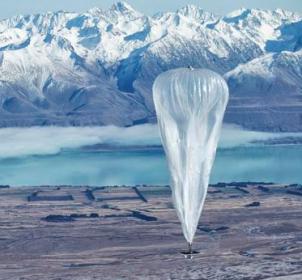  Google has launched giant balloons over New Zealand's south Island. It carries computer equipment that can create a high-speed internet infrastructure. Called 'project loon', the helium filled balloons carry antennae, computers, batteries and navigational equipment, collecting power from solar panels that dangle below. Each can provide internet coverage over an area of 1200 square kilometers. The project intends to help remote areas across the world access internet coverage.
Google will announce Saturday it has 30 balloons floating over New Zealand to provide free Internet access to disaster-stricken, rural or poor areas. Eventually, as the balloons move across the stratosphere, consumers in participating countries along the 40th parallel in the Southern Hemisphere could tap into the service.
Called Project Loon, the experimental program was hatched by engineers at the company’s top-secret Google X laboratory in California’s Silicon Valley that invented driverless cars and eyeglasses equipped with voice-activated computers. Some of those technologies won’t immediately or ever make money for the firm. Google said it pursues these “moon shot” ideas with the aim of solving big problems and creating breakthrough technologies that ultimately will bring more users to its services.
The balloons fly in the stratosphere, twice as high as airplanes, and engineers had to find a way to control their direction. So they came up with navigational controls that move balloons up and down to find altitudes where wind is traveling in desired directions. They also wanted to keep the balloons in clusters to ensure consistent connectivity in a given area.
The company has the leading Web search, e-mail service and Internet video site, while its Android mobile software has become the most popular in the world.
These tools have enabled Google to track a wide range of consumer behaviors, which the company sells to advertisers. In recent weeks, privacy advocates have raised concerns over how much of this data is being shared with the U.S. government.
About two-thirds of the world’s population is not connected to the Internet. In developing nations, the portion is larger. About seven out of eight people in emerging market economies have no Internet access, according to the International Telecommunications Union, a multinational organization of communications regulators.
For best mobile phone deals: http://shopping.telecomtiger.com/
For latest updates on facebook: http://www.facebook.com/pages/TelecomTiger/429104257149437 |